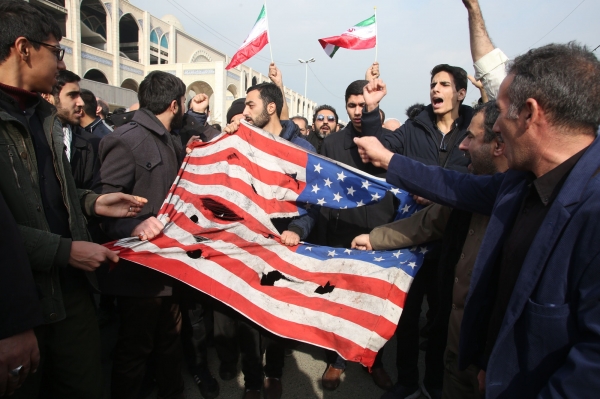
On Jan. 3, 2020, the commander of Iran's Quds Force, Gen Qasem Soleimani, was killed by a U.S. drone attack in Iraq. The tension in the Middle East escalated dramatically and the dispute between the U.S. and Iran is unlikely to end easily.
A Brief Recent History between the U.S. and Iran
In 2015, Iran signed a nuclear agreement called Joint Comprehensive Plan of Action (JCPOA) with a group of world powers known as the P5+1 (the US, UK, France, China, Russia, and Germany). Under the accord, Iran agreed to limit its sensitive nuclear activities and allow in international inspectors from the International Atomic Energy Agency (IAEA) in return for the lifting of crippling economic sanctions. However, in May 2018, U.S. President Donald Trump unilaterally abandoned the nuclear deal. In his speech, Trump called the Iran deal “horrible” and said the U.S. would “work with our allies to find a real, comprehensive, and lasting solution” to prevent Iran from developing nuclear arms. By reinstating economic sanctions, Iran’s economy fell into depression. As a countermeasure, Iran began rolling back key commitments under the nuclear deal and started its pressure campaign to force Trump to lift the sanctions. In May 2019, explosions hit six oil tankers in the Gulf of Oman. The U.S. blamed Iran for that attack but did not present evidence and Iran also denied those accusations. On June 20, Iranian forces shot down a US military surveillance drone over the Strait of Hormuz asserting that it was in their airspace. However, the U.S. military insisted that the drone was in international waters at the time and said the attack was unprovoked.
The Assassination of Qasem Soleimani
Along with the heightened tensions in Hormuz, clashes began in Iraq, where both the U.S. and Iran have exerted influence. On Dec. 27, 2019, a pro-Iranian militia in Iraq, kata'ib Hezbollah, attacked a U.S. military base, killing one American contractor and wounding several U.S. citizens. So far the attacks were aimed at strategic assets, not people. But now Iran crossed Trump’s ‘red line’ that any harm on Americans will lead to a forceful response. Two days later, the U.S. military retaliated by launching an airstrike on the pro-Iranian militia. On Dec. 31, Iran orchestrated an attack on the U.S. embassy in Iraq. Trump decided to send a powerful message to Iran and chose the option to kill Soleimani. On Jan. 3, 2020 the U.S. military assassinated the Iranian general using a drone near Baghdad airport. On the very next day, Trump gave remarks on the killing of Qasem Soleimani: “Under my leadership, America’s policy is unambiguous: To terrorists who harm or intend to harm any American, we will find you; we will eliminate you. We will always protect our diplomats, service members, all Americans, and our allies.” He also remarked that “We took action last night to stop a war. We did not take action to start a war.”
The aftermath of the killing
The killing of Soleimani, who was called the most powerful military commander in the Middle East, triggered a massive wave of condolences in Iran. His funeral was held four times in different places. There were so many people that a stampede broke out and at least 56 people were killed during the funeral processions.
In retaliation, Iran carried out a ballistic missile attack on airbases housing US forces in Iraq on Jan 8. However, just hours after the missile attack a Ukrainian airliner crashed in Iran shortly after take-off. It turned out that Iran’s forces fired two Tor-M1 missiles and unintentionally shot down the airplane. The political situation in Iran has changed rapidly in the wake of the shooting down of a Ukrainian passenger jet. On Jan. 11, anti-government protests were held in Tehran shouting slogans condemning government deception about the accident. Protesters chanted slogans such as “Death to the dictator” or “They are lying that our enemy is America, our enemy is right here.”
South Korea is also keeping an eye on Hormuz's tension. More than 70% of the imported crude oil in Korea passes through the Hormuz strait every day. Also, the U.S. is requesting Korea to send troops to Hormuz. In response, South Korea's Ministry of National Defense announced that it will dispatch troops to the Strait of Hormuz to better protect South Korean nationals and ships passing through the waterway. But said that the unit will operate independently instead of joining the U.S. led International Maritime Security Construct (IMSC). Nevertheless, the U.S. welcomed South Korea's decision.


